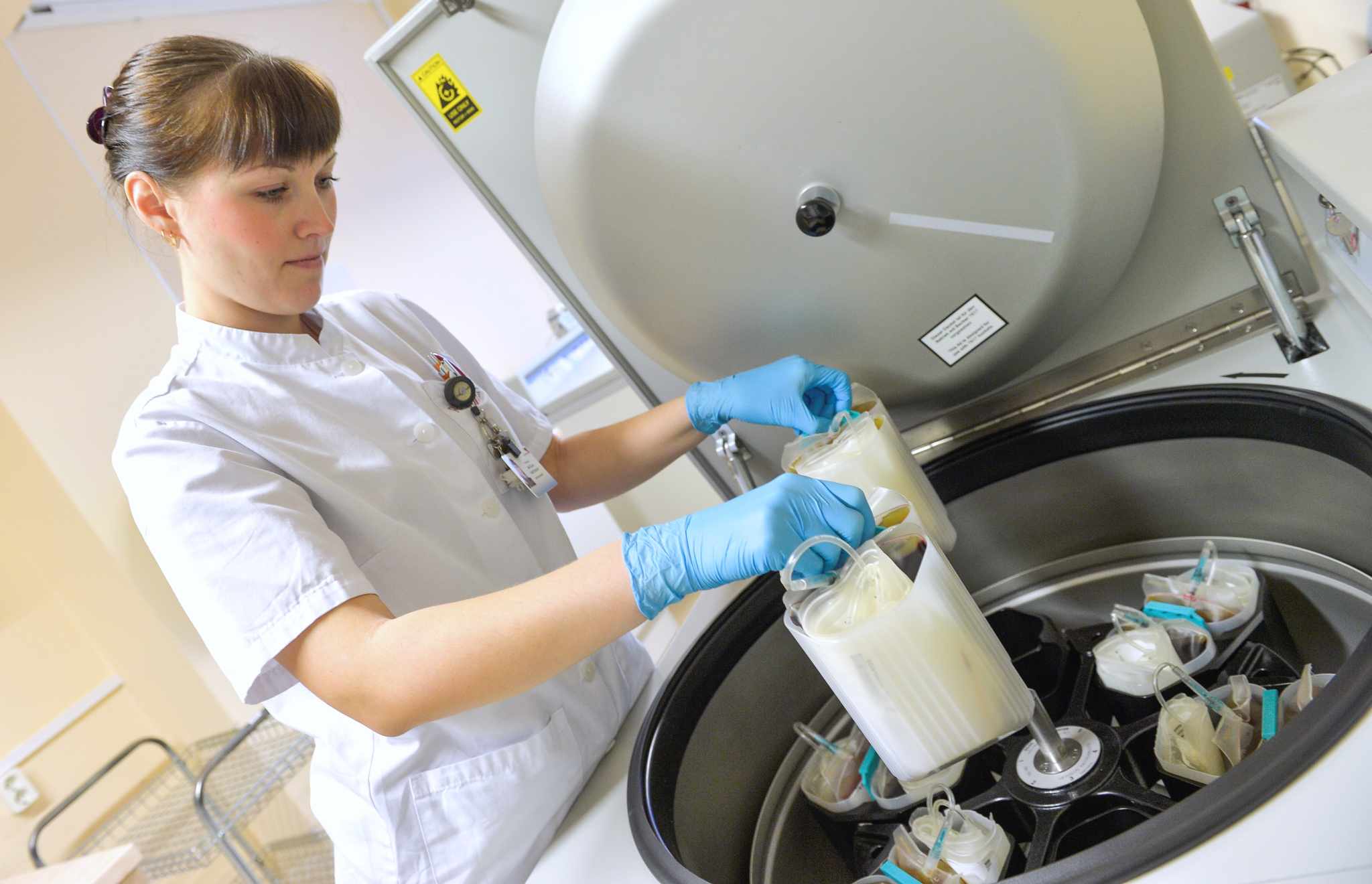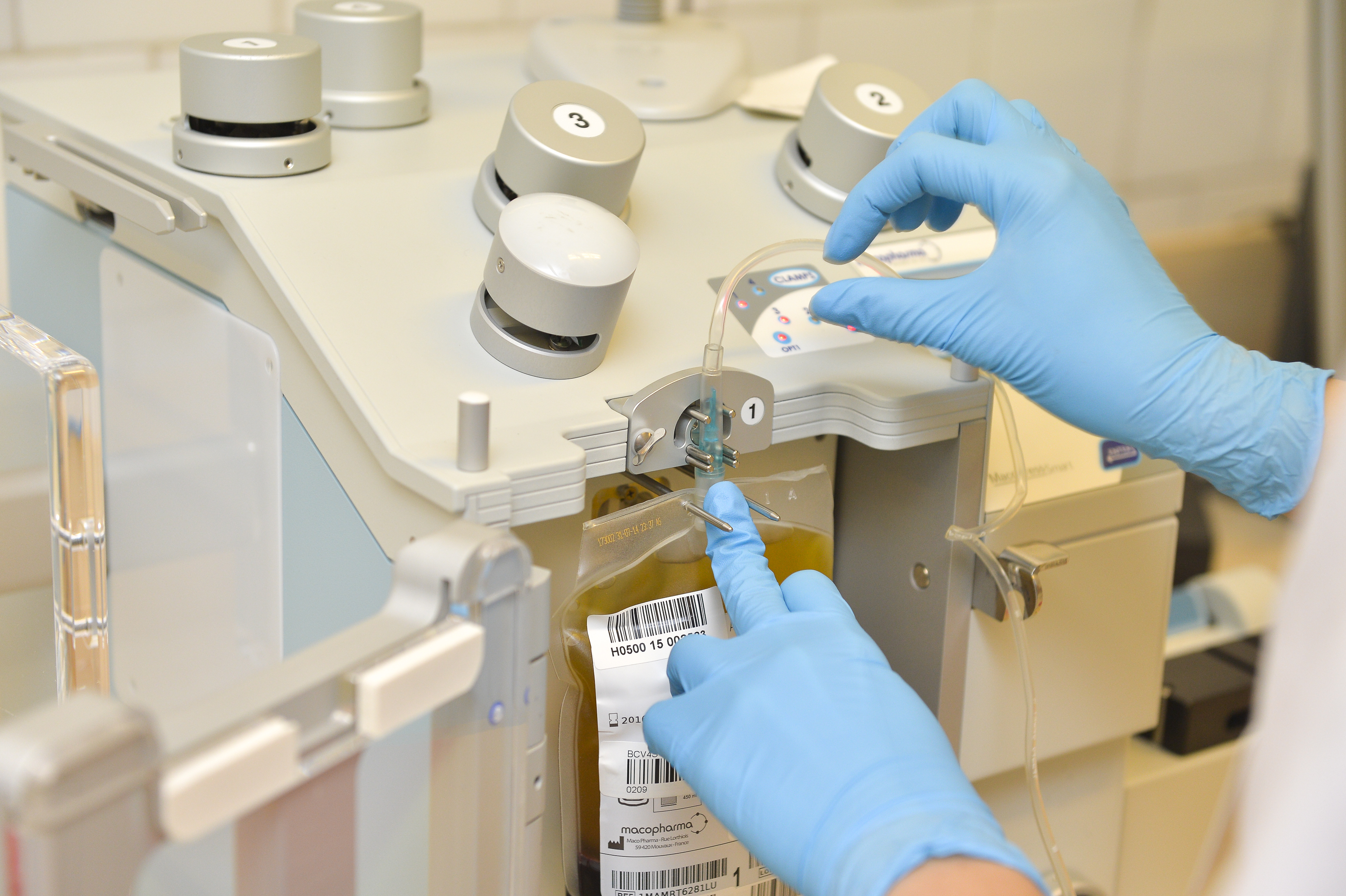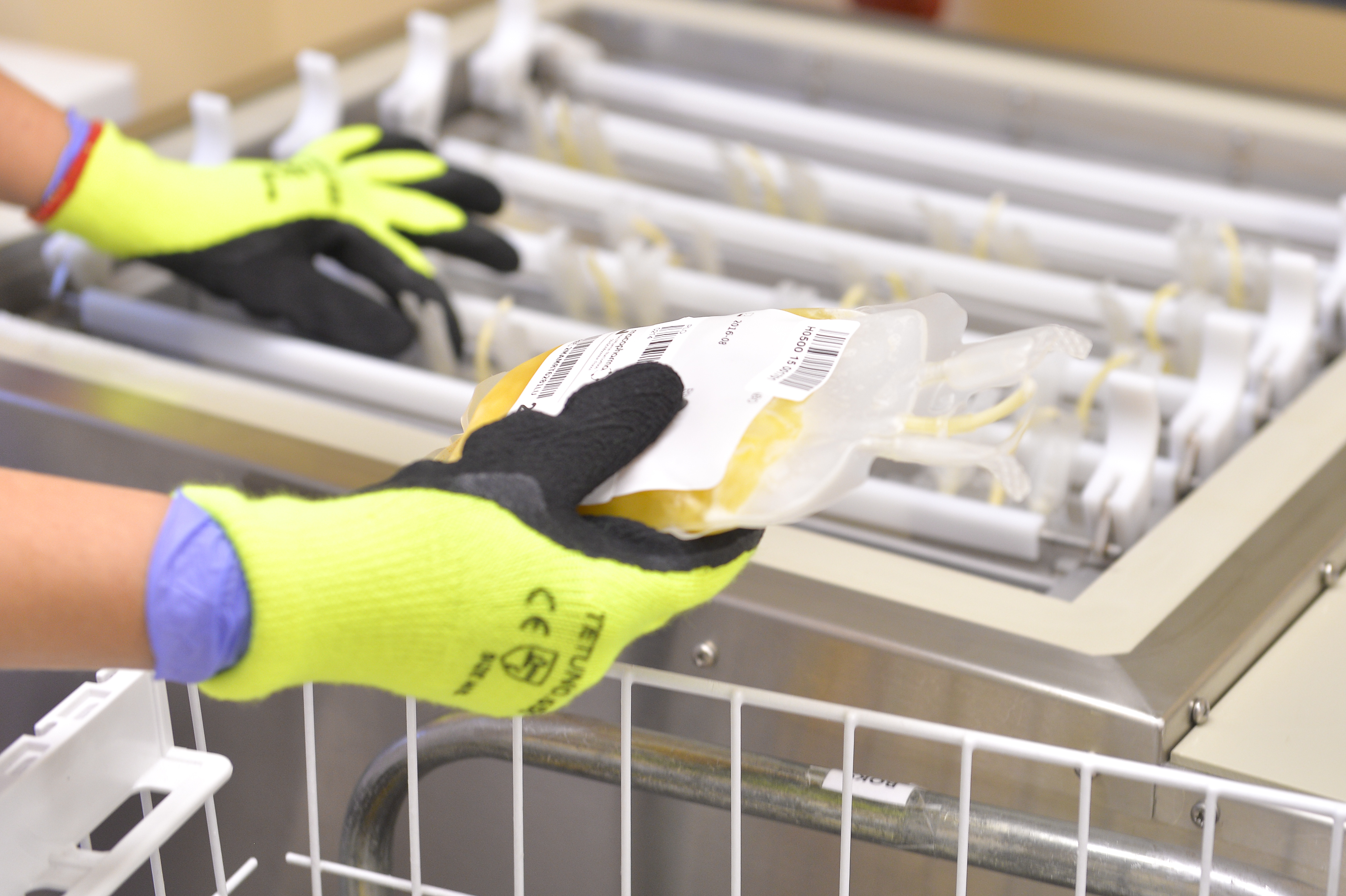Making Blood Components
Use of centrifuge
Centrifugal force is used to separate the components of blood – red blood cells, platelets and plasma – from each other. The result is that the particles with different densities precipitate in layers.
A dose of whole donor blood is placed in a large centrifuge and is spun for a preset time (usually about 15 minutes) at a preset speed. The red blood cells precipitate to the bottom of the bag, with the platelets above them, then the white blood cells and the plasma at the very top.
Separation
The plasma and red blood cells are collected into different bags under optical supervision using a device called the separator. The platelets and white blood cells remain in the original bag.
The layers of platelets and white blood cells from three or four donors with the same blood type are allowed to flow together and the by-product is returned to the centrifuge process. A layer of leukocytes and thrombocytes is formed. The leukocytes that cannot be used for blood transfusions are separated. As the final result, the process yields a platelet concentrate.
In the course of the processing, a nutrient solution is added to the red blood cell/platelet bag so that the cells would remain viable in storage.
After being separated, the plasma is flash-frozen at -30 C in a process taking several hours. The rapid freezing keeps the clotting agents in the plasma from breaking down and when the plasma is thawed for transfusion, the clotting agents become active again.


